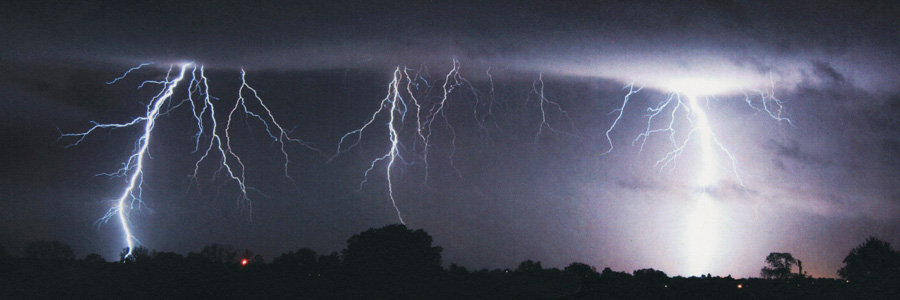Disaster preparedness: How to prepare for extreme weather
 MO Extreme Weather - Lightning storm by Missouri State Archives. CC0
MO Extreme Weather - Lightning storm by Missouri State Archives. CC0
Manitoba is no stranger to extreme weather.Just this year we experienced a “historic” winter storm in April, massive flooding in spring, and extreme heat in July.
Many point to climate change as a cause but experts have not given a definitive conclusion. What they are certain of, however, is that it may be a sign of things to come. This is why we need to be prepared for more extreme weather in the future.
Preparing for extreme weather
Whether we’re expecting a thunderstorm, hail, blizzard, hurricane, storm surge, tornado, extreme heat, or heavy rain, the first step to safety is to be prepared. The best time to start doing this is now. It might feel ridiculous to be winter-proofing your home in 28-degree weather but trust me, you’ll thank yourself later!
Survey your home and surroundings and see if something needs to be repaired or cleaned. For example, check your roof to see if it’s in good condition. Have your gutters, drains and downpipes cleaned out before winter comes. Also, trim dead branches and cut down dead trees to reduce the danger of these falling on your house during a storm.
Newcomers should also learn more about house features. Knowing where your power and gas lines are located is important because you may need to turn them off in the event of flooding. You should also check if you have a sump pit drainage system in the basement and know how to operate your sump pump. Do you know how to adjust your thermostat? Knowing the ideal settings will not only make your home more comfortable, it can also lead to higher savings on your hydro bill. Meanwhile, a properly functioning AC, exhaust and ceiling fan are essential during summer, while heating and proper insulation are a must in winter.
Having an emergency kit is another important part of emergency preparedness. Watch the video below to learn what goes into a kit:
Weather alert basics
When bad weather is imminent, stay tuned to weather reports from Environment Canada so you’ll know what to expect. Local authorities may also provide directions when a weather warning is issued. Follow these directions and take note of important phone numbers to call in case you’ll need more help.
Environment and Climate Change Canada issues more than 20 different types of alerts for various weather hazards but generally, the type of alert used depends on the severity and timing of the event:
- Warning– Urgent message that severe weather is either occurring or will occur. This is updated regularly.
- Watch – Alerts you to potential storm or severe weather to occur. It can be upgraded to Warning as certainty increases about the path and strength of the storm system.
- Advisory – Notice for specific weather events that are less severe but could still significantly affect you.
- Special Weather Statement – Least urgent type of alert that lets you know that conditions are unusual and could cause concern. It provides information of what weather may be coming.
Prepare for all seasons
- Read more tips on Fall and Winter safety from the Government of Canada.
- Extreme heat and summer storms from Winnipeg.ca has practical tips on how to keep yourself and your home safe.
- Know who to call for help. If you need to clear out debris, or report flooding, contact 311 (Winnipeg). Check this page in case you experience basement or overland flooding.
- Rural Manitobans can download Preparing for flood conditions in rural Manitoba to know key contacts and other helpful information.
- For more resources, check out the Province of Manitoba – Flood Information page.
Sources: Severe storms – What to do? Government of Canada; Get Prepared.ca; and Be prepared for summer weather, Government of Canada. Accessed August 10, 2022.
